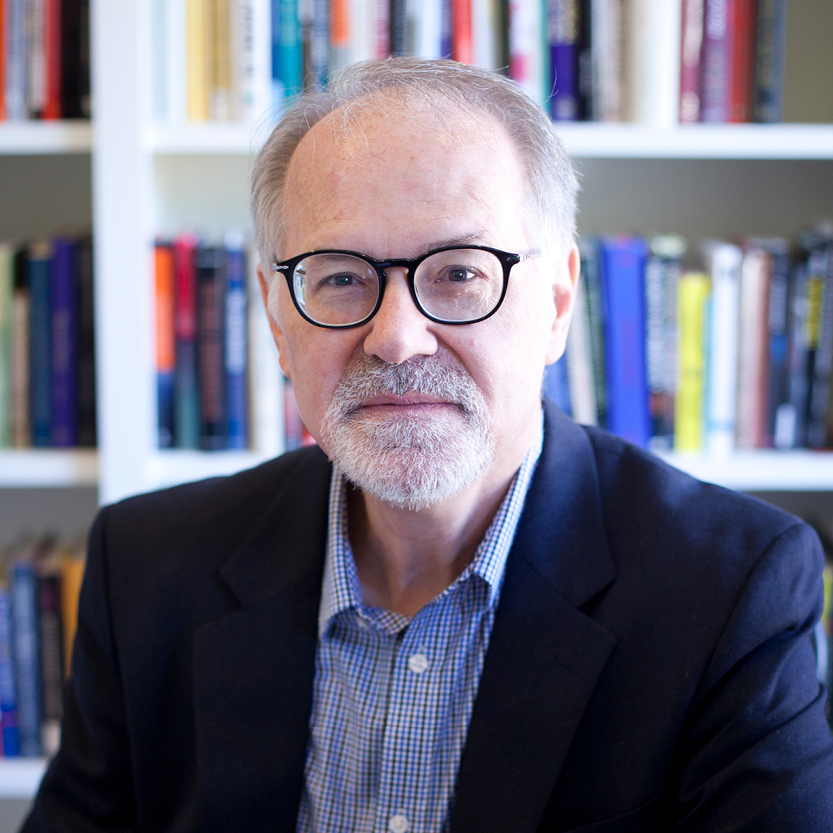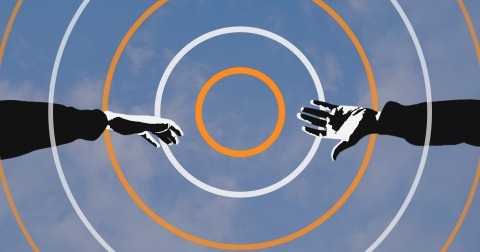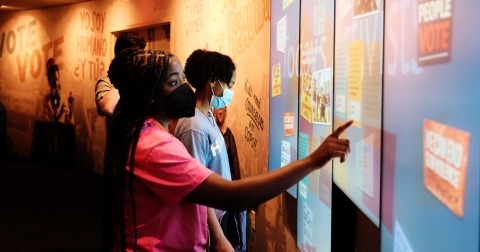Could TikTok, the social-media platform for sharing short videos, one day replace your psychologist? Probably not, but its growing popularity as a tool for self-diagnosing mental-health disorders is one reason it has exploded in popularity over the last several years, outpacing competitors like Snapchat, Pinterest and Twitter to become the fifth most popular social-media platform and the second most popular platform after YouTube among teenage users.
According to Statista, a company specializing in market data and consumer insight, much of TikTok’s rapid rise to social-media stardom occurred during the coronavirus pandemic with a surge in growth of 180% among 15–25-year-old users. That demographic has been hit hard by the isolation, anxiety and general unwellness that the lockdowns caused, so it may be no surprise that the last several years have also seen a sharp increase in the number of teens and young adults using the app to learn about mental-health disorders and to self-diagnose themselves with a variety of conditions like autism, attention deficit hyperactivity disorder (ADHD), borderline personality disorder, dissociative identity disorder, obsessive-compulsive disorder and others. The trend can be a troubling one for mental health professionals who see the potential harm that misdiagnosis can cause, but for Joseph Davis, a research professor of sociology with UVA’s College and Graduate School of Arts & Sciences, the young people who are discovering something about themselves in the symptoms they see online may be less concerned about diagnosing disorders than about finding ways to talk about some of the unique challenges they’re facing.
Self-Diagnosis and Its Pitfalls
It should go without saying that diagnosing oneself with any condition comes with risks. Despite the wealth of medical and pseudo-medical information readily available online, it’s easy to fall into the trap of thinking that Google is a substitute for a degree in medicine or clinical psychology and doing so could lead to unnecessary stress caused by overestimating the severity of a problem or to missing out on important treatment when a self-diagnosis is incorrect.
Not only do internet sources vary in accuracy and reliability, said Bethany Teachman, a professor of psychology and director of clinical training for the College’s Department of Psychology, but arriving at a correct diagnosis requires training and context.
“Distinguishing between certain diagnostic categories can be tricky,” Teachman said. “There are several symptoms, such as difficulty concentrating, that are part of multiple disorders so people may assign themselves an incorrect diagnosis. As another example, periods of sadness can occur as part of a unipolar depressive disorder, which includes depressive episodes only, but also as part of a bipolar disorder, which includes both depressive and manic episodes. A person self-diagnosing may focus on the depression symptoms but not recognize that they also have periods of mania.”
Effective diagnosis also requires the ability to recognize not just a single symptom but a range of criteria, Teachman added, and the ability to recognize how mental-health conditions develop over time.
“For many disorders, it is not about having a really bad day or even week but about a pattern of symptoms that persists. Relatedly, people can confuse normal, healthy reactions to difficult situations with a clinical problem. For example, we expect people to experience a range of intense painful emotions after a trauma, so post-traumatic stress disorder can’t be diagnosed until at least a month after the trauma occurred,” Teachman said.
 Medications for mental-health conditions can vary in meaningful ways, Teachman added, so misdiagnoses can interfere with getting good help, but they can also lead to harmful patterns of behavior.
Medications for mental-health conditions can vary in meaningful ways, Teachman added, so misdiagnoses can interfere with getting good help, but they can also lead to harmful patterns of behavior.
“A big part of diagnosing anxiety disorders involves recognizing avoidance behaviors someone is doing because of anxiety, but it often takes some probing to help someone realize that not doing something can be a problem. For example, if you avoided taking a promotion that would have involved giving presentations because of social anxiety, you might look at your current work situation and think everything is fine because your current job doesn’t trigger your social anxiety but not realize that you are missing out on exciting opportunities and not living as fully because of the avoidance. A mental health expert is trained to consider different diagnoses and evaluate impairments in functioning in a variety of ways,” Teachman said.
A Crisis of Communication
Despite TikTok’s shortcomings, research suggests that its practicality as a diagnostic tool may not be the only reason for its popularity.
Sociologist Joseph Davis, who directs the Picturing the Human Project for UVA’s Institute for Advanced Studies in Culture, explores questions at the intersection of self, morality and cultural change. He writes on medicine, psychiatry and public health, and he is the author of a Psychology Today blog called “Our New Discontents: Reflections on Mental Health and Social Ideals.” Looking at the social-media trend from a cultural perspective, Davis explained that it may be more about the search for recognition and validation than a desire to diagnose an illness.
Davis has conducted extensive interviews with individuals of a wide range of ages, and he finds that identifying with a mental-health condition is often a way for people to give their struggles meaning and definition.
Young people have always compared themselves to others as a way to evaluate their self-worth, but before the internet and before social media, the experience was constrained to a limited range of people, Davis explained, and the distress it could produce was also constrained.
“You’ve suffered loss, you’ve suffered a setback or you’ve underperformed at school, not living up to your potential. That causes painful emotional responses — in all their variety and complexity. These are often reasonable and proportionate reactions to difficult circumstances which, by definition, means they’re not evidence of a mental disorder. But young people today don’t have a way to talk about them.”
“Now the world opens up almost infinitely,” Davis said. “Imagine waking up in the morning and looking at your social-media feed, and it’s just picture after picture of somebody else’s life. Everybody seems better looking, more fit and doing more exciting things. The ways in which you can be shown to be somehow inadequate have expanded immensely.”
And while social media offers young people new ways to feel bad about themselves, it also offers them a way to connect with others who share similar experiences. Diagnostic categories serve as a framework for talking about frustrating, troubling and disappointing experiences, and can serve as a focal point for communities where people can share those experiences with a sympathetic and supportive audience.
But it’s important to recognize, Davis said, that even though young people are using these diagnostic categories to describe their struggles, that does not necessarily suggest that there’s a real medical problem.
“When I asked the people I interviewed if they thought they were suffering from a mental illness, virtually all said ‘No,’” Davis said, but he also noticed the subjects he interviewed lacked a rich emotional vocabulary. “We’ve medicalized emotional distress by putting it into flat, homogeneous categories like depression and anxiety, and people have really picked up on that. The clinical terms are replacing our emotion words as well as other ways of talking about difference.”
 There are very high rates of anxiety and depression among teens and young adults, and while it is important that they are seeking information about mental health and feeling more able to talk about the subject with others, much of the suffering Davis sees is something distinctly different from the kind caused by mental-health disorders.
There are very high rates of anxiety and depression among teens and young adults, and while it is important that they are seeking information about mental health and feeling more able to talk about the subject with others, much of the suffering Davis sees is something distinctly different from the kind caused by mental-health disorders.
“I call it everyday suffering,” Davis said. “You’ve suffered loss, you’ve suffered a setback or you’ve underperformed at school, not living up to your potential. That causes painful emotional responses — in all their variety and complexity. These are often reasonable and proportionate reactions to difficult circumstances which, by definition, means they’re not evidence of a mental disorder. But young people today don’t have a way to talk about them.”
Despite the appeal of using medical terms to talk about everyday suffering, however, Davis said it’s a troubling trend. Besides leading to the over-prescription of drugs, seeing a problem as a mental disorder, he said, may be harming our ability to understand our experiences and to learn from them.
“If I feel guilt, and the guilt leads me to ask the question, What have I done wrong? That tells me I might have something to do about making it right, and that would be the appropriate response to that distress,” Davis said. “Calling it something else can’t help. It obscures what’s taking place, and it obscures what the appropriate response should be. And it makes it harder, not easier, for others to understand what we are going through.”
Davis acknowledges that there are those who truly need help from trained therapists, but for those who are looking for ways to deal with the kind of distress that most of us can relate to, the alternative may just lie in using these experiences to build deeper connections with those around us.
Part of what we’ve lost to social media and to the isolation caused by the pandemic is that we have fewer friends, or fewer of the kinds of friends we need most, Davis said. “What we need to regain is the kind of relationships that allow us to be vulnerable again, to share, in our own words, our response to our situation.”
If you or someone you know is struggling, a good step is to reach out to a mental health professional to ask for an evaluation. There are resources for faculty and staff through the Faculty & Employee Assistance Program and for students through Counseling & Psychological Services. There are also many other public resources, including the 988 Suicide and Crisis Lifeline, that can provide immediate support.






















